What our hypothetical Hall of Fame ballots look like (part 1)

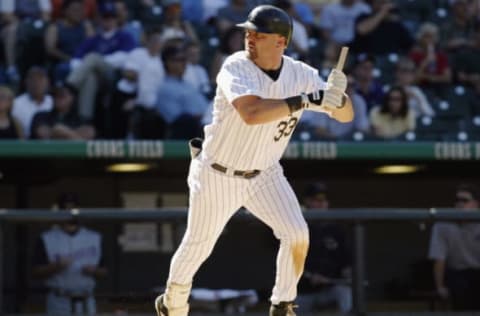
With the results of the Baseball Writer’s Association of America’s vote on the Baseball Hall of Fame being announced on January 24th, we here at Rox Pile decided to each make our own hypothetical Hall of Fame ballots.
The results of the Hall of Fame voting is nearly upon us so we here at Rox Pile decided to compile our own ballots. Each of our experts and contributors will have one hypothetical ballot and some reasoning of why or why not they will include players. First off, here are the rules that the BBWAA has for their real ballots. We will be following the same rule: a maximum of ten players are allowed on the ballot. Total, there are 33 players on the ballot.
Here is the list of each and every one of them and number of ballots they have been on. For the real balloting, to remain on the ballot, a player must get five percent of the vote and they can only be on the ballot for 10 years before going on to the Veteran’s Committee vote.
| Player | Year |
|---|---|
| Barry Bonds | 6th |
| Roger Clemens | 6th |
| Vladimir Guerrero | 2nd |
| Trevor Hoffman | 3rd |
| Jeff Kent | 5th |
| Edgar Martinez | 9th |
| Fred McGriff | 9th |
| Mike Mussina | 5th |
| Manny Ramirez | 2nd |
| Curt Schilling | 6th |
| Gary Sheffield | 4th |
| Sammy Sosa | 6th |
| Billy Wagner | 3rd |
| Larry Walker | 8th |
| Chris Carpenter | 1st |
| Johnny Damon | 1st |
| Livan Hernandez | 1st |
| Orlando Hudson | 1st |
| Aubrey Huff | 1st |
| Jason Isringhausen | 1st |
| Andruw Jones | 1st |
| Chipper Jones | 1st |
| Carlos Lee | 1st |
| Brad Lidge | 1st |
| Hideki Matsui | 1st |
| Kevin Millwood | 1st |
| Jamie Moyer | 1st |
| Scott Rolen | 1st |
| Johan Santana | 1st |
| Jim Thome | 1st |
| Omar Vizquel | 1st |
| Kerry Wood | 1st |
| Carlos Zambrano | 1st |
Without further ado, let me introduce what my ballot would look like if I were to have a ballot so don’t worry: if you think my ballot is stupid, I don’t have one
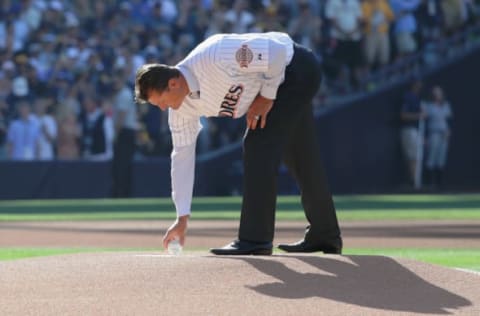
10 player ballot: Vladimir Guerrero, Trevor Hoffman, Edgar Martinez, Mike Mussina, Curt Schilling, Larry Walker, Fred McGriff, Chipper Jones, Jim Thome, Johan Santana.
Reasoning for those ten
Guerrero, Jones, and Thome are no-doubters that will get in on the real balloting this year. If you wonder why, check out their Baseball Reference pages.
Guerrero is a nine time All-Star, 2004 AL MVP, eight 30+ home run seasons, ten seasons of 100+ RBI, two seasons of 37 or more stolen bases, career .318 hitter, 140 OPS+.
Thome has more than 600 home runs, a career on-base percentage of .402, and a career OPS+ of 147.
Jones has more than 450 career home runs, a .303/.401/.529 career slash line, and a 141 OPS+.
For the other seven, I would vote for them because of these reasons.
Hoffman: second in All-time saves with 602, nine seasons of 40 or more saves, 88.8 percent conversion rate of saves, nearly won the Cy Young Award in both 1998 and 2006.
Martinez: best designated hitter of all-time. He has the designated hitter award named after him, six seasons of 100+ RBI, eight seasons of 20+ home runs, nine seasons of 30+ doubles, 10 full seasons of over .300 batting average including league-leading twice, 11 seasons with 97 or more games played that he had an OBP over .400, and a 147 career OPS+.
Mussina: 270 career wins, 11 seasons of 200+ innings pitched, five time All-Star, nine times ranking in the top ten in Cy Young Award voting.
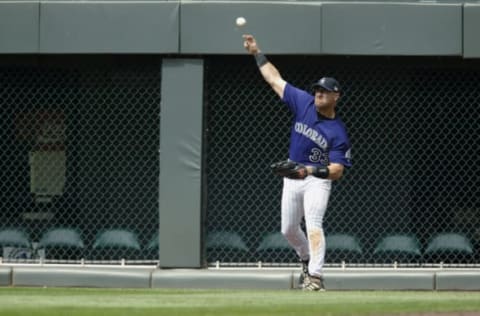
For Schilling: six time All-Star, four times in the top four in Cy Young voting (including three times coming in second), nine seasons of 200+ innings pitched including four seasons of 250+ innings pitched, three seasons of 300+ strikeouts, five time leader in strikeout to walk ratio, 11-2 record with a 2.23 ERA in 19 career postseason starts.
Walker: six time Gold Glove winner, three time Silver Slugger Winner, ranked in MVP voting eight times including winning in 1997, .313/.400/.565 slashline, and (most importantly) a 141 OPS+ (so all the Coors Field haters can be quiet because OPS+ adjusts to park’s played in and the era played in).
McGriff: first off, if he there weren’t steroid users, his numbers would look even better. Five time All-Star, eight times ranking in MVP voting including five times in the top ten, eight seasons 100+ RBI plus another five seasons of 88 RBI or more, .284/.377/.509 slash line, 493 home runs, 134 OPS+.
Santana: he might surprise you the most of the ten I chose but if you look at his career numbers, his numbers are very similar to Sandy Koufax. Personally, I like about 8 “Hall of Fame seasons” but Santana was so dominant in about six so I include him. Three time ERA title winner, six seasons of 199+ innings pitched, lead the American League in strikeouts from 2004-2006 as well as the ERA+, FIP, WHIP, hits allowed per nine innings, and strikeouts per nine innings titles in those seasons. He also won the Cy Young Award in ’04 and ’06 plus four more seasons in the top seven in Cy Young voting.
I would also vote for Santana in my hypothetical vote as he very well could drop off the ballot with the five percent rule. According to Ryan Thibodaux’s HOF tracker, Santana has garnered three votes, or 1.7% of the ballots that have been publicly released (which is 42.0%).
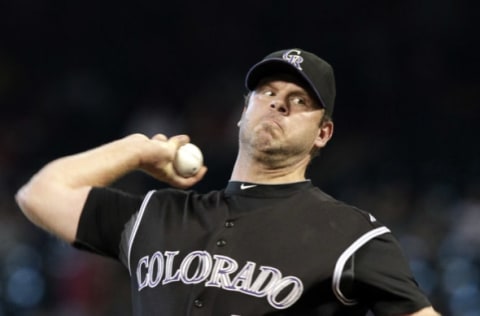
Those I would not vote for
First off, if I had a vote, I would not include players that tested positive for steroids or has serious steroid allegations behind them. The only two of the bunch that I would potentially consider are Barry Bonds and Roger Clemens. The reason behind this is I believe that they would have been Hall of Famers regardless.
However, I believe that there are more than 10 players that are worthy of being in the Hall of Fame that did not take steroids. Therefore, I would not vote for Bonds or Clemens. Even if I had a ballot and that ballot didn’t have a limit on the players, I’m not sure if I would vote for them but I would be more open to including them. Also, in the steroid category are Gary Sheffield, Sammy Sosa, and Manny Ramirez.
Others like Chris Carpenter, Johnny Damon, Livan Hernandez, Orlando Hudson, Aubrey Huff, Jason Isringhausen, Carlos Lee, Brad Lidge, Hideki Matsui, Kevin Millwood, Jamie Moyer, Kerry Wood, Billy Wagner, and Carlos Zambrano will not be on next year’s ballot and are not Hall of Famers.
With the exception of Wagner, combined, through Thibodaux’s HOF tracker, only Damon and Moyer have tallied a vote in that group…and even then, it boggles my mind that some are voting for Damon and not voting for others. For example, the three voters who voted for Damon all did not vote for Larry Walker, who has a lot better numbers than Damon, who had a career 104 OPS+ and zero Gold Gloves, to Walker’s 141 OPS+ and seven Gold Gloves.
For Wagner, I wouldn’t vote for him because he only ranked in Cy Young Award voting twice, had less saves and a lower conversion rate than Hoffman (422 and 85.9%). However, the kicker is that, while it was only limited, he was beyond atrocious in postseason play. In 14 games (11 1/3 innings), he had an ERA of 10.03. When you are a closer, you have to get outs in tough spots and big games and there is nothing bigger than the postseason.
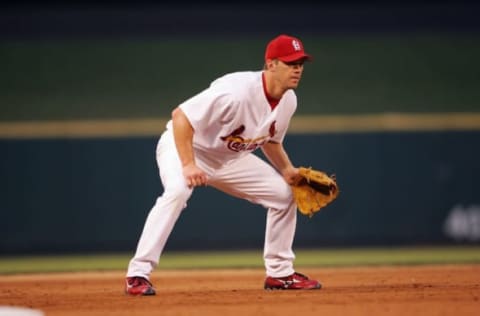
Those that I would vote for if I had a vote and was allowed more than 10
Jeff Kent, Andruw Jones, and Scott Rolen
Kent: eight seasons of 100+ RBI, 12 seasons of 20+ home runs including three more than 30+, .290/.356/.500 slash line, 123 OPS+, six time All-Star, ranked in MVP voting seven times including winning in 2000, .276 batting average in 49 postseason games. He wouldn’t be in my top ten because his offense wasn’t as dominant as the other offensive players and his defensive was sub-par.
Jones: he’s, arguably, the best defensive center fielder of all-time, 10 time Gold Glove winner, nine seasons of 90+ RBI, seven seasons of 30+ home runs. He wouldn’t be in my top ten because he never played in more than 107 games after his age 30 season and didn’t play a game after his age 35 season. Also, his 111 OPS+ is not that great.
Rolen: eight time Gold Glove winner, five seasons of 100+ RBI, three seasons over 30+ home runs. He wouldn’t be in my top ten because he was injury plagued and he struggled in the postseason. Of these four, he is the hardest to leave off for me.
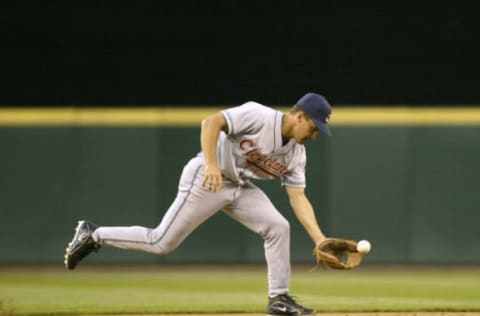
The only player I have not mentioned that is on the ballot is Omar Vizquel. Being from Northern Ohio and growing up a Cleveland Indians fan, he was actually my favorite player growing up. However, he played in 24 seasons in his MLB career and he only had an OPS+ above 100 in two of those 24 seasons. He won 11 Gold Gloves but his defense was overrated, in my opinion.
If he were to become a Hall of Famer, as Jay Jaffe of Sports Illustrated notes, he would be the worst offensive shortstop and below average in most defensive metrics among Hall of Fame shortstops. With that, I would not vote for him.
More from Rox Pile
- A Colorado Rockies Thanksgiving
- Colorado Rockies: What if Todd Helton had played football instead?
- Colorado Rockies: Charlie Blackmon out for the season
- Colorado Rockies: Injuries shift look of roster ahead of Dodgers series
- Colorado Rockies: Has Sean Bouchard earned a second look in 2023?
Final Thoughts
This time of the year is always interesting to see who the Hall of Fame will be enshrining in July. The Veterans Committee already voted in Jack Morris and Alan Trammell at the Winter Meetings in December so there will definitely be two.
In addition, with the numbers that Guerrero, Thome, and Chipper Jones are getting (all over 93.3% as of Tuesday night, according to Thibodaux), they are locks to get in. Trevor Hoffman and Edgar Martinez are both right on the bubble as they are between the 78 percent needed and a little over 80 percent. Usually, the numbers go down a little from the public ballots and non public ballots so I wouldn’t be shocked if both get in or if neither get in.
The main Rockie on the ballot, Larry Walker, has seen tremendous gains (as more than 25 voters added him to their ballot this year when they did not have him last year). However, he is only trending at about 39 percent. With that, Ryan Thibodaux has determined through his tracker that even if every voter were to vote for him for the rest of the way, it would not be enough to enshrine Walker this year.
Next: The greatest game in Rockies history, Game 163, from a fan's perspective
However, if Guerrero, Thome, Jones, Hoffman, and Martinez were to get in, the ballot will be less crowded and Walker will get a lot more votes next year.